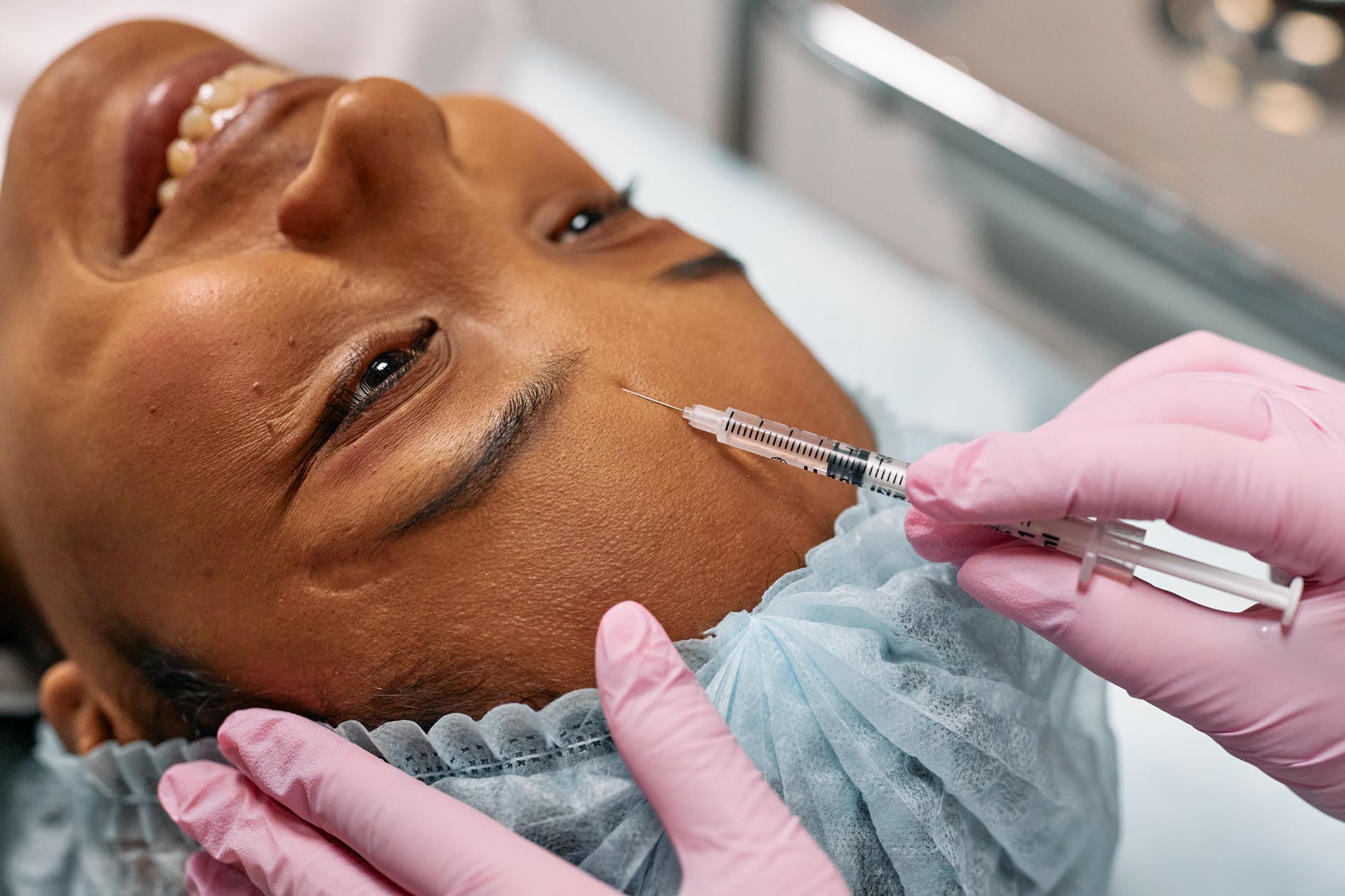Xeomin vs Botox, The War Of Injectables

Xeomin and Botox are both botulinum toxin type A injections which are FDA approved. These injections work by minimizing muscle contraction in the targeted areas. Although these belong to the same class of injections, these two have slight differences. Here is a complete guide on Xeomin vs Botox to help you find the right treatment for you.
What is Xeomin?
Xeomin was the first-ever FDA-approved IncobotulinumtoxinA in 2010. Similar to how Botox works, Xeomin injections relax the muscle activity temporarily in targeted areas.
What is Botox?
Botox or OnabotulinumtoxinA was first approved in 1989 for some medical use. In 2002 it was FDA approved for cosmetic purposes and chronic migraine in 2010.
Botox injections, when used for aesthetic purposes, are called Botox cosmetics.
These injections help to treat wrinkles and fine lines, while Xeomin only treats frown lines.
Read More- Who Will Win Between Botox and Fillers?
Xeomin and Botox similarity
These cosmetic injections contain toxin type A. These work similarly by relaxing the target area muscles temporarily. Both Botox and Xeomin start showing results within a week of treatment. Results may last for 3 to 6 months before you require a follow-up injection.
Despite these similarities, Xeomin and Botox should not be used interchangeably. Your doctor, based on your concerns and goals, will make suitable recommendations.
Xeomin vs Botox
One biggest difference between Xeomin and Botox is that Xeomin is free of any additives that could increase the risk of developing antibodies. In simple words, unlike other cosmetic injections, your body will not be able to build any resistance to Xeomin. This increases the chances of getting better effects.
Botox injection requires a refrigerator, whereas Xeomin does not. While refrigeration does not impact the effects in any way, making Xeomin more accessible.
Xeomin Vs Botox Use
Botox and Xeomin are used to treat similar conditions but with few differences.
Both these injections are approved to treat the following:
- Blepharospasm- involuntary eyelid twitching
- frown lines
- cervical dystonia,
- upper limb spasticity
Botox is also used in the treatment of:
- chronic migraine
- forehead lines and crow’s feet
- overactive bladder
- abnormal eye muscle alignment
- primary axillary hyperhidrosis or (severe underarm sweating)
FDA has approved Xeomin to treat chronic drooling or sialorrhea in adults and children.
There are some uses of Xeomin and Botox, which are considered off-label when used for a condition that is not FDA approved or on pediatric patients. For Instance, doctors use Botox to treat chronic migraines in children; however, this treatment is not yet approved for small age groups.
Who makes a good candidate for Xeomin or Botox?
After understanding your requirements and concerns, your doctor will determine whether Botox or Xeomin is right for you.
Xeomin and Botox are not the right treatment for you if you have:
- allergic reactions to botulinum injections
- respiratory illnesses, like asthma
- breathing difficulties
- problems with swallowing
- muscle or nerve disorders
Xeomin and Botox Procedure
Xeomin and Botox injections are both used to treat target muscle areas. The exact number and dosage of injections vary depending on the condition you want to treat.
For Instance. Botox treatment when being used for migraines involves the use of 31 injections in several areas.
After several months, the effects wear off; it depends on the individual whether you will have to repeat the treatment sooner or later.
Xeomin Vs Botox Side Effects
Be it Xeomin, Botox or any other inject, some temporary side effects are common.
- pain
- redness
- bruising
- itching
- swelling
- bleeding
Xeomin Side Effects:
Below we have mentioned some of the common side effects associated with Xeomin when used for treating blepharospasm.
- dry eye
- headache
- vision problems
- sagging eyelids
- breathing difficulties
- dry mouth
- diarrhea
Other possible side effects include:
- runny nose
- nasal congestion
- upper respiratory infections
- high blood pressure
- vomiting
Botox
Some possible side effects of Botox are:
- facial drooping or weakness (Botox Cosmetic uses)
- headache
- flu-like symptoms
Read More- What Is The Difference Between Dysport vs Botox?
Xeomin or Botox AfterCare Practices
After you get your injections, it is important to follow your doctor-advised aftercare instructions to minimize any chances of possible side effects.
There is no recovery time required for these injections; you can resume your normal routine after your session is complete. However, avoid massaging the target area to reduce the risk of treatment migration.
Xeomin Vs Botox Possible Risks
All botulinum injections have the risk of spreading to other body parts and leading to serious complications. These risks are even higher in off-label uses.
Botox and Xeomin have reported different side effects depending on the treatment they have been used for.
For Instance, when Xeomin is used for cervical dystonia, you must consult with your doctor about any possibility of developing muscle and neck pain. Xeomin is also associated with swallowing, breathing, and speaking problems which occur for up to weeks after your sessions.
Before You get these injections, you should inform the doctor about any Over Counter or prescription medicine that you take.
Botulinum toxin may interact with:
- allergy medications
- Antibiotics
- muscle relaxants
- sleep medications
- cold medications
Final Words:
Xeomin and Botox both contain botulinum type A. the injections are used for treating many similar conditions, while Botox offers more FDA-approved uses.
The exact choice of injection carries depending on the results you are looking for and the doctor’s recommendation. Serious side effects are very rare; however you must discuss any associated risk with your doctor before getting the treatment done.
FAQs about Xeomin vs. Botox
Which Is Better: Xeomin or Botox?
Botox and Xeomin both work to smoothen the skin and get rid of any frown lines. These are both effective teams of reaction. Xeomin has a quick reaction and lasts for a longer duration. The best treatment option is the one that your practitioner recommends.
.
Can I use Xeomin or Botox while pregnant?
Botox and Xeomin are both used for localized treatment and low minimal risk of entering the bloodstream. However, they still carry the risk of fetal harm. Before getting any type of treatment during pregnancy, you must consult with your doctor.
Can I use Xeomin or Botox with alcohol?
Alcohol contains blood-thinning properties, which can worsen the side effects of drugs. It is always recommended to hold off alcohol at least 24 hours before you get the Botox or Xeomin session. Alcohol also increases the chances of swelling and bruising around the treatment area.
Which lasts longer: Xeomin vs. Botox?
Any botulinum injection lasts for around three months on average. Some people find that the effects last for 5-6 months.
What is the average cost of Xeomin?
Xeomin injection cost depends on where you get it done. If you buy it from a pharmacy, it can cost you around $1,000. Using a Xeomin discount card, you can get it for a lower price, around $300 for an 11 unit vial.
How fast does Xeomin work?
As soon as you get it injected, Xeomin starts to work at the target area muscles. However, the effects of the treatment will be visible after a week of getting teh treatment done.
Make sure to follow up with your doctor after 14 days to evaluate the results of your treatment.






